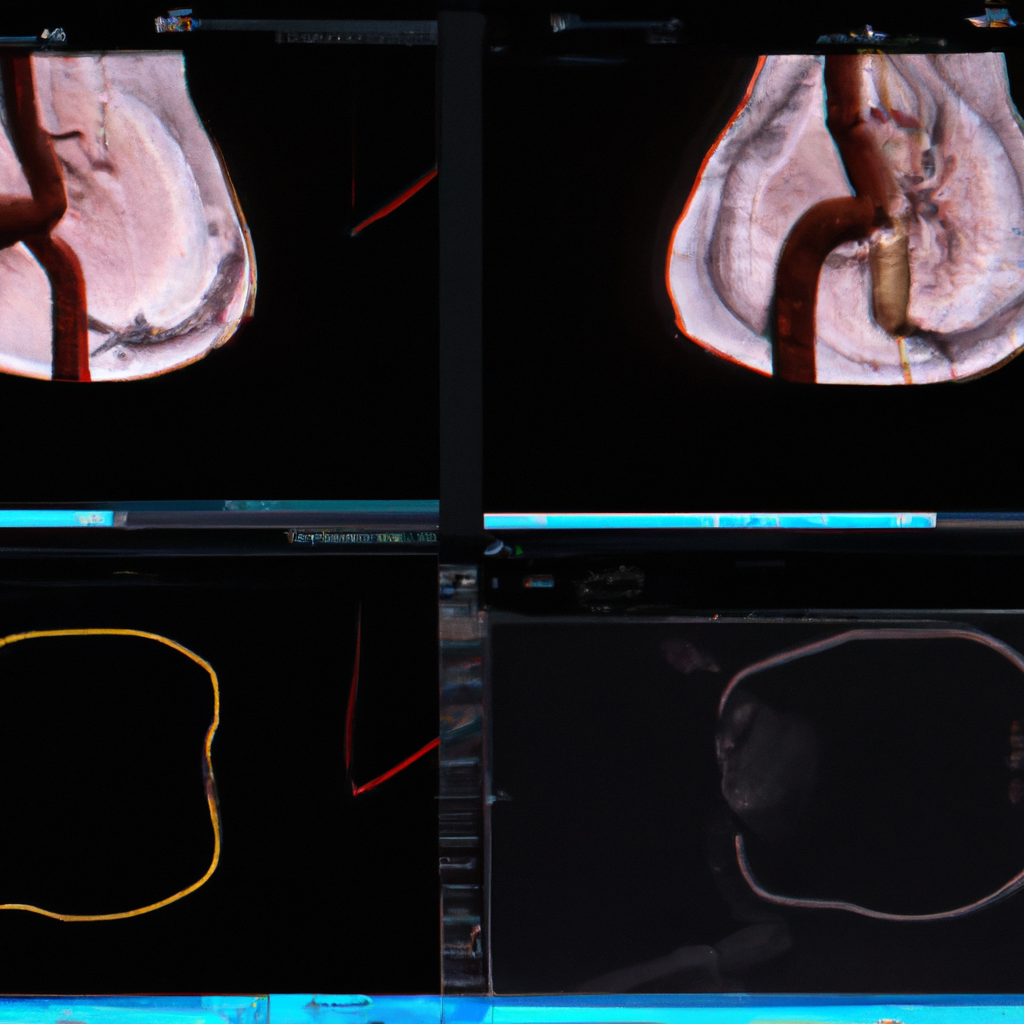-
Reading Roadmap
- Comparison of CT and Invasive Angiography in Diabetic Patients with Suspected CAD
- Key Takeaways
- Introduction: The Challenge of Diagnosing CAD in Diabetic Patients
- CT Angiography: A Less Invasive, Cost-Effective Option
- Invasive Angiography: The Gold Standard with Higher Risks
- Diagnostic Accuracy: A Close Match
- Choosing the Right Approach: A Matter of Risk Stratification
- FAQ Section
- 1. What is CAD?
- 2. How is CAD diagnosed?
- 3. What are the risks of invasive angiography?
- 4. Is CT angiography less accurate than invasive angiography?
- 5. Which method is more cost-effective?
- Conclusion: Balancing Effectiveness, Risks, and Costs
- Further Analysis
- Key Takeaways Revisited
Comparison of CT and Invasive Angiography in Diabetic Patients with Suspected CAD

[youtubomatic_search]
Key Takeaways
- CT angiography is less invasive and more cost-effective than invasive angiography.
- Both CT and invasive angiography have high diagnostic accuracy in detecting CAD in diabetic patients.
- CT angiography may be more suitable for patients with a lower risk of CAD, while invasive angiography may be more appropriate for high-risk patients.
- CT angiography can provide additional information about the heart and lungs that invasive angiography cannot.
- Further research is needed to determine the best approach for individual patients.
Introduction: The Challenge of Diagnosing CAD in Diabetic Patients
Coronary artery disease (CAD) is a leading cause of death among diabetic patients. Early detection and treatment of CAD can significantly improve patient outcomes. However, diagnosing CAD in diabetic patients can be challenging due to the presence of other comorbidities and the often asymptomatic nature of the disease. Two commonly used diagnostic tools are computed tomography (CT) angiography and invasive angiography. This article will compare these two methods in terms of their effectiveness, risks, and costs in diagnosing CAD in diabetic patients.
CT Angiography: A Less Invasive, Cost-Effective Option
CT angiography is a non-invasive imaging technique that uses X-rays to visualize the coronary arteries. It is less invasive than invasive angiography, which involves inserting a catheter into the patient’s artery. CT angiography is also more cost-effective, with a study by Hulten et al. (2013) showing that it can save up to $400 per patient compared to invasive angiography.
Invasive Angiography: The Gold Standard with Higher Risks
Invasive angiography is considered the gold standard for diagnosing CAD. It provides a detailed view of the coronary arteries and can detect even small blockages. However, it carries a higher risk of complications, such as bleeding, infection, and damage to the arteries. A study by Bangalore et al. (2011) found that the risk of major adverse cardiac events was 1.7% for invasive angiography compared to 0.9% for CT angiography.
Diagnostic Accuracy: A Close Match
Both CT and invasive angiography have high diagnostic accuracy in detecting CAD in diabetic patients. A meta-analysis by Danad et al. (2017) found that the sensitivity and specificity of CT angiography were 96% and 83%, respectively, while those of invasive angiography were 99% and 89%. However, CT angiography can provide additional information about the heart and lungs that invasive angiography cannot, which may be beneficial in some cases.
Choosing the Right Approach: A Matter of Risk Stratification
Choosing between CT and invasive angiography often depends on the patient’s risk of CAD. CT angiography may be more suitable for patients with a lower risk of CAD, as it is less invasive and more cost-effective. On the other hand, invasive angiography may be more appropriate for high-risk patients, as it provides a more detailed view of the coronary arteries. Further research is needed to determine the best approach for individual patients.
FAQ Section
1. What is CAD?
Coronary artery disease (CAD) is a condition in which the coronary arteries, which supply blood to the heart, become narrowed or blocked due to a buildup of plaque.
2. How is CAD diagnosed?
CAD is typically diagnosed through imaging tests such as CT angiography and invasive angiography, which visualize the coronary arteries.
3. What are the risks of invasive angiography?
Invasive angiography carries a risk of complications such as bleeding, infection, and damage to the arteries.
4. Is CT angiography less accurate than invasive angiography?
Both CT and invasive angiography have high diagnostic accuracy in detecting CAD. However, CT angiography can provide additional information about the heart and lungs that invasive angiography cannot.
5. Which method is more cost-effective?
CT angiography is generally more cost-effective than invasive angiography.
Conclusion: Balancing Effectiveness, Risks, and Costs
In conclusion, both CT and invasive angiography are effective tools for diagnosing CAD in diabetic patients. CT angiography is less invasive and more cost-effective, making it a suitable option for lower-risk patients. Invasive angiography, while carrying a higher risk of complications, provides a more detailed view of the coronary arteries and may be more appropriate for high-risk patients. Further research is needed to determine the best approach for individual patients, balancing effectiveness, risks, and costs.
[youtubomatic_search]
Further Analysis
As the prevalence of diabetes and CAD continues to rise, it is crucial to optimize diagnostic strategies to improve patient outcomes. Future research should focus on developing risk stratification tools to guide the choice between CT and invasive angiography, as well as exploring new imaging techniques that can provide even more accurate and detailed information about the coronary arteries.
Key Takeaways Revisited
- CT angiography is less invasive and more cost-effective than invasive angiography.
- Both CT and invasive angiography have high diagnostic accuracy in detecting CAD in diabetic patients.
- CT angiography may be more suitable for patients with a lower risk of CAD, while invasive angiography may be more appropriate for high-risk patients.
- CT angiography can provide additional information about the heart and lungs that invasive angiography cannot.
- Further research is needed to determine the best approach for individual patients.







